
Are you on the hunt for the ultimate long-range binoculars? Look no further! Our comprehensive guide is crafted to cater to the curious and the adventurous alike, detailing the finest binoculars designed for those who don’t just observe, but truly see.
Calling all nature enthusiasts, stargazers, and distant horizon seekers! Ever felt limited by the range of your current binoculars? Imagine having the power to bring the farthest reaches of the earth or the cosmos right before your eyes.
Picture yourself spotting the intricate patterns of a bird’s feathers from across the field or gazing at the craters of the moon as if they were within arm’s reach. With the right pair of long-range binoculars, these dreams can become your reality.
Dive into our article and find the best long-range binoculars that match your passion. With expert reviews, detailed comparisons, and tips on what to look for, you’re just a read away from making the far-off wonders of the world appear closer than ever before.
Rest assured, with our hand-picked selections, you’ll be equipped with not just a tool, but a gateway to experiencing the world in stunning clarity and detail—no matter the distance. Let’s embark on this visual journey together and transform the way you view the world.
Alternatively, you can use your long distance binocular to do some sports, hunting at a professional level.
You may be interested in best binoculars for ocean viewing and best binos under $1000
Binoculars For Long Distance Comparison Chart
| Model | |||||
|---|---|---|---|---|---|
| Size | 10-22x50 | 25x100 | 20x60 | 20x56 | 18x56 |
| Eye Relief/ Exit Pupil | 8.6mm @ 10x/2.3-5mm | 15mm/ 4mm | 20mm/ 3mm | 16.4 mm/ 2.8mm | 16.4mm/ 3.1mm |
| Optics Coating | Multicoated Eco-Glass | Multi-Coated | Multi-Coated | Multi-Coated | Fully Multi-coated |
| Dimensions | 8.58 x 4.25 x 4.25 in | 18.2 x 11.6 x 6.7 in | 3.4 x 7.7 x 8.8 in | 4 x 9 x 10 in | 13.1 x 8.4 x 4.5 in |
| Weight | 2 lbs | 8.75 pounds | 3.08 lbs | 10.03 pounds | 0.01 ounces |
20 km range binoculars
1. Nikon 8252 ACULON A211 10-22×50 Binocular For Long Distance – Top Pick Review
- Multicoated Eco-Glass Lenses
- Minimum Focus Distance 49.2 feet / 15 m
- Field of view @ 1000m (m/ft)- 66/199
- Turn-and-Slide Rubber Eyecups
- Durable Rubber-Armored Coating
Let’s kick off with a zoom binocular for long distance.
Yes, you heard right, the Nikon 8252 ACULON A211 10-22×50 is a zoom binocular with a 10-22×50 style.
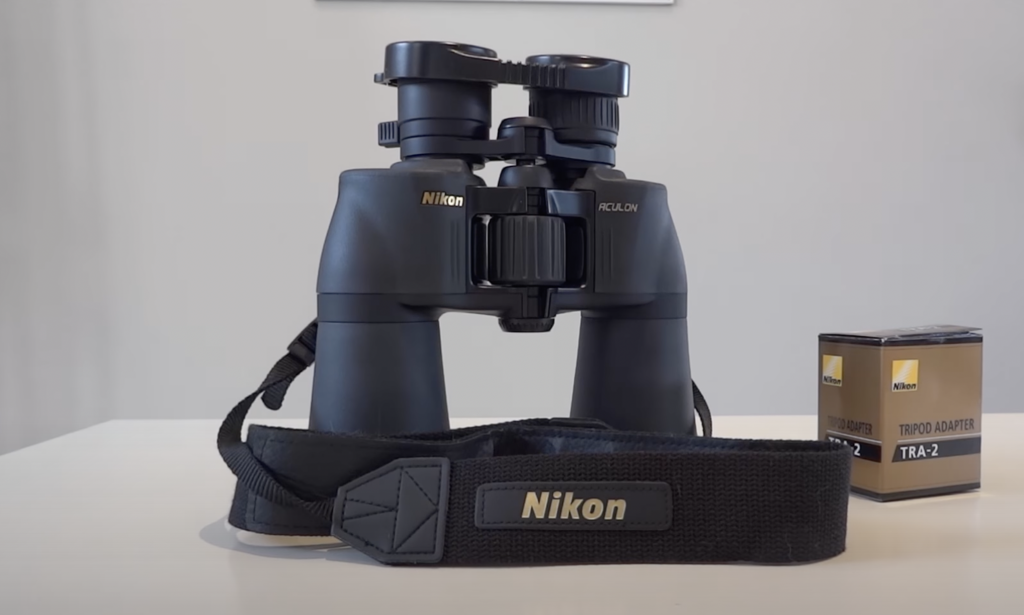
This means you can zoom images between a 10x magnifications to a whopping 22x magnification on it’s 50 mm objective lens diameter.
With this binocular, your exit pupil size will, therefore, change according to the magnification you choose in the range between 10x and 22x.
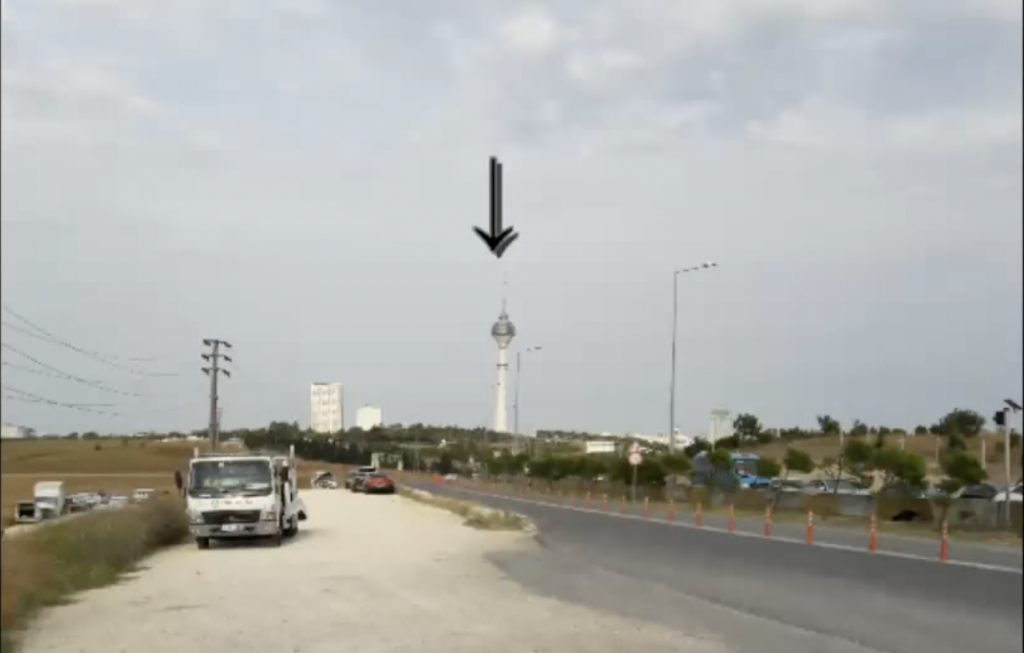

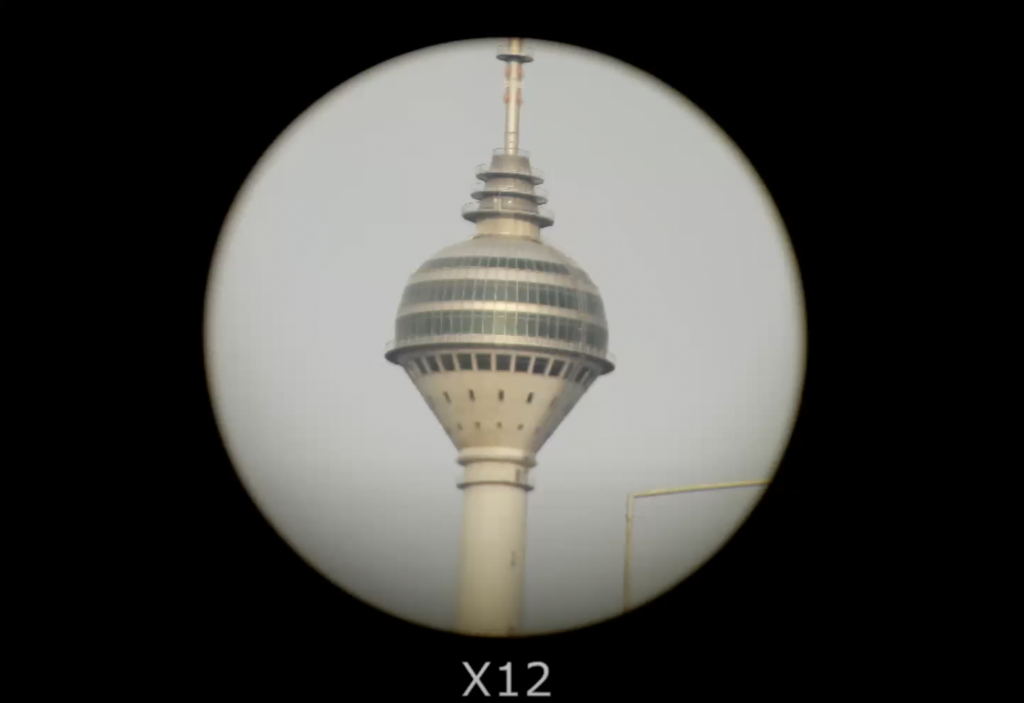
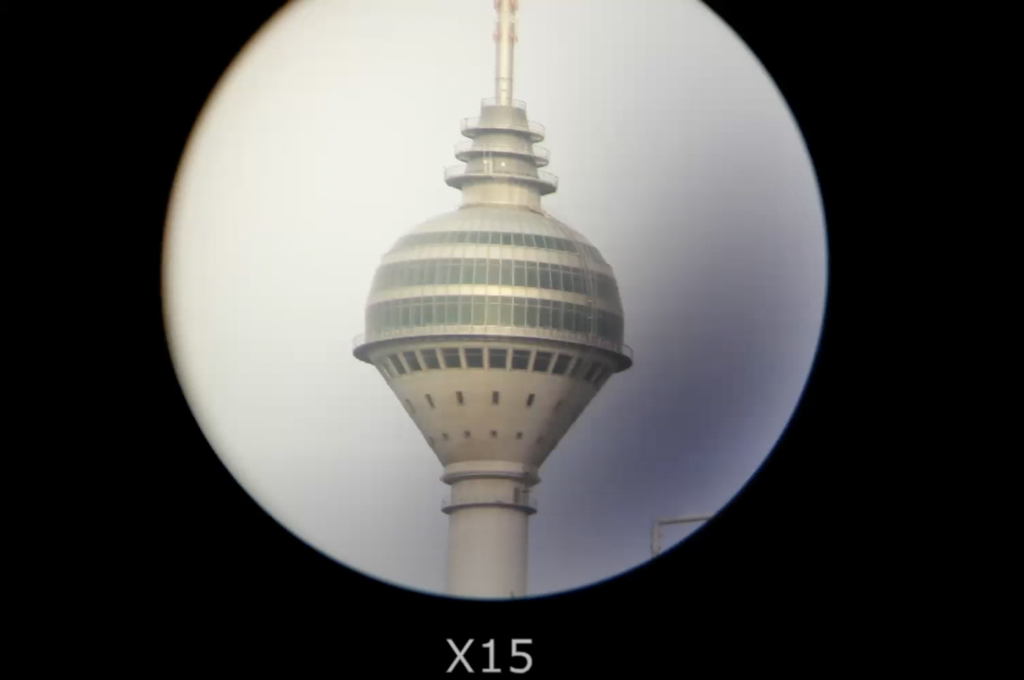
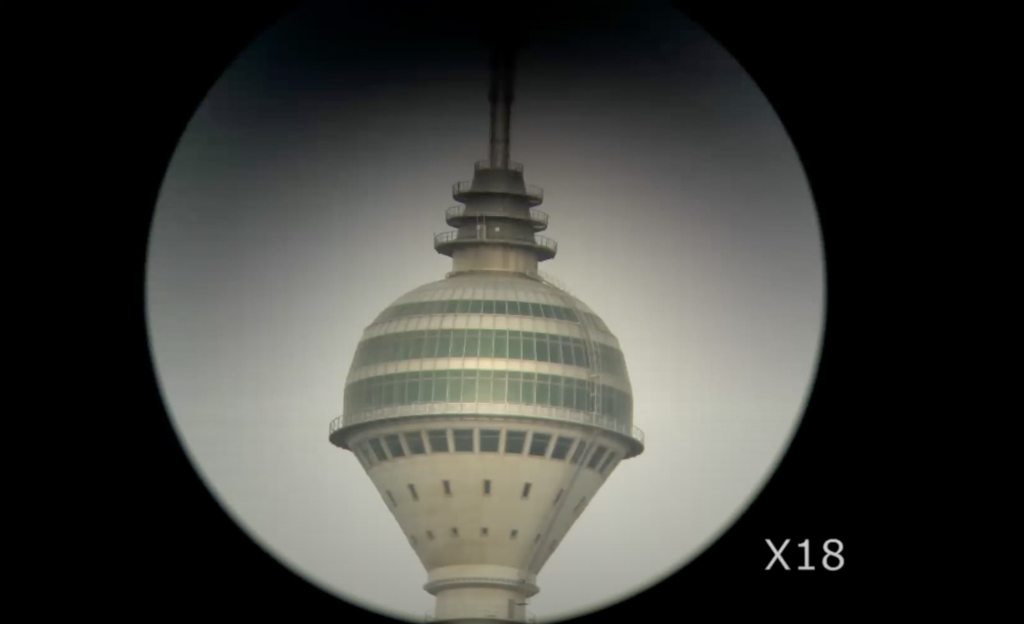
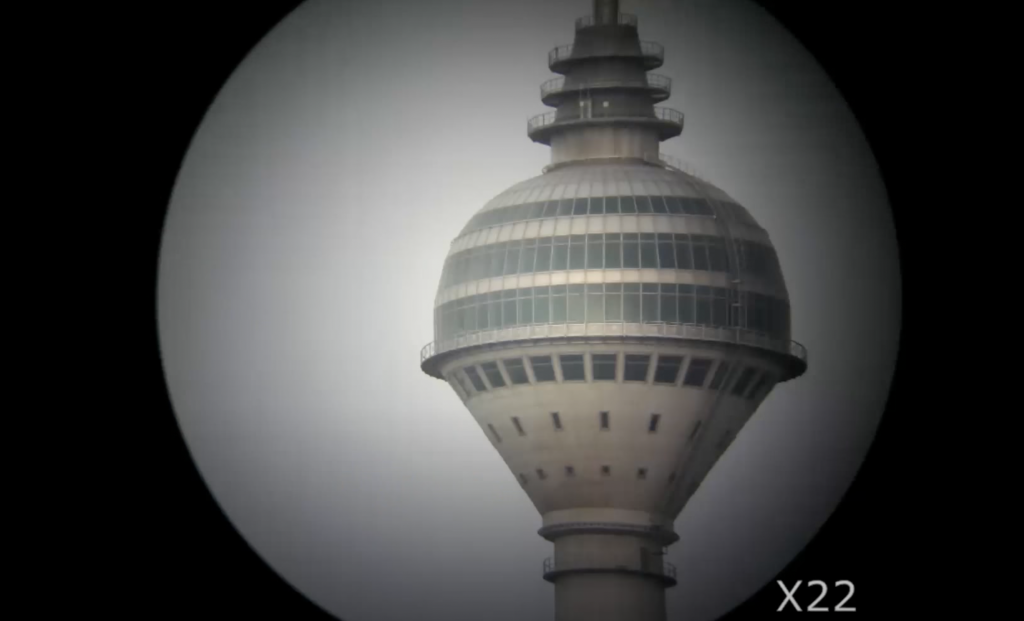
In terms of optical technology, the Nikon 8252 ACULON A211 10-22×50 comes with a multicoated Eco-glass pair of lenses.
This makes the binoculars easy to use thanks to a light-weight lead and a glass composition that is arsenic free. Plus the lenses work to deliver precession and clear viewing with a high level of light transmission.
There is a central focus knob and an eyepiece zoom that enables you smoothly and quickly move between the different focusing capacities. The knob is easy to reach and also works well for moving through the different magnification levels.
For glass wearers, this zoom binocular comes with rubber eyecups that are easy to adjust for a comfortable fit. As a result, you can use it for extended periods without filling fatigued.
In fact, it comes with a tripod mount that adds to the comfortable viewing experience.
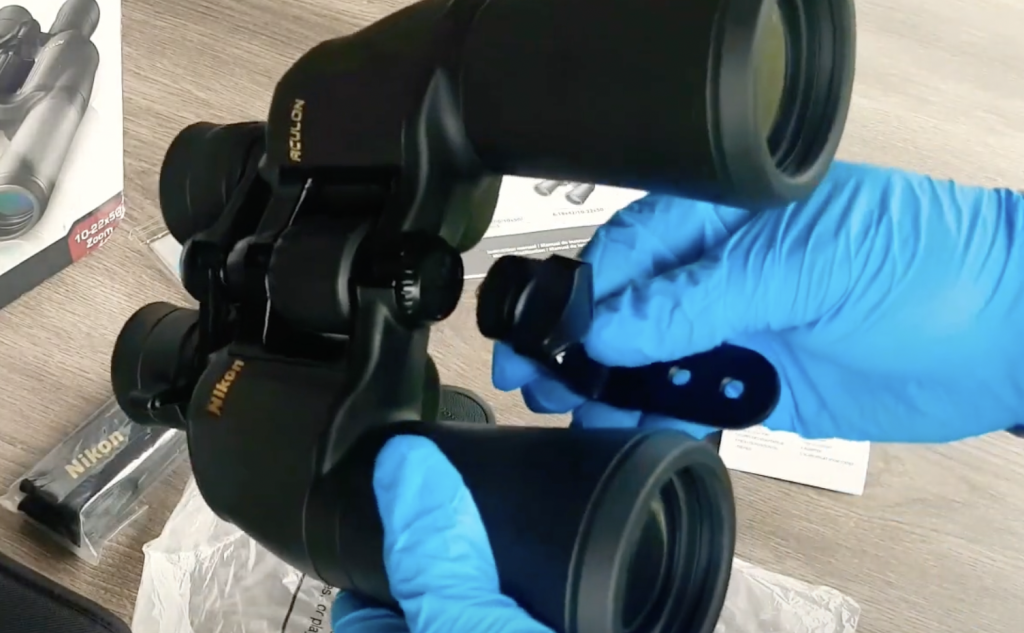
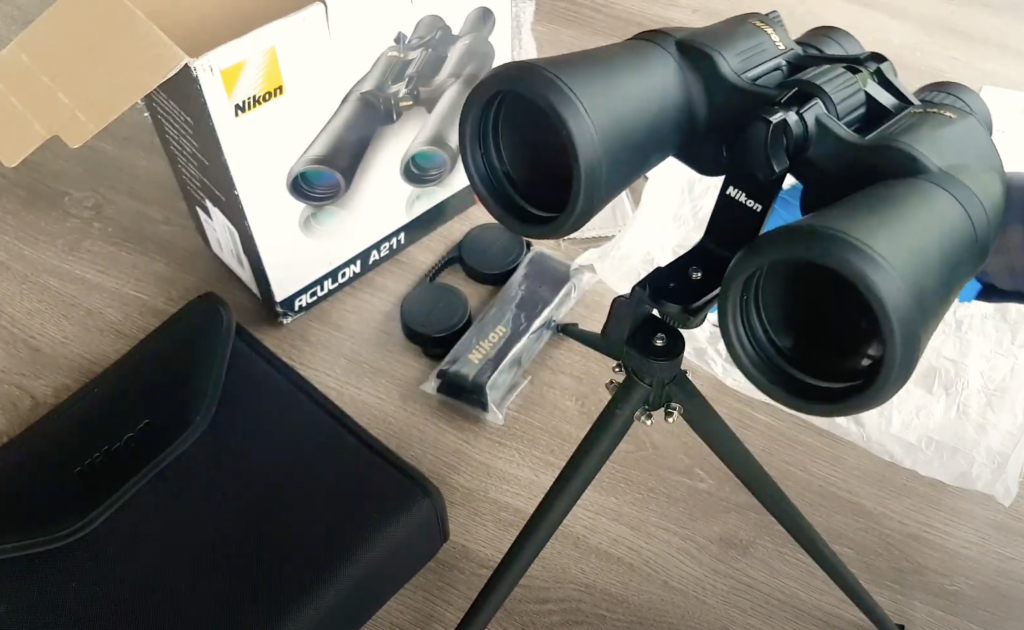
Performance
If you want a long distance binocular, you need one that is capable of zooming fast and easily through different magnification levels. That is exactly what the Nikon 8252 ACULON A211 10-22×50 offers.
It is a zoom binocular that boasts of a durable housing made of rubber- armor that gives it a non-slip grip even in the most extreme conditions. But that is not where this binocular shines.
The Nikon 8252 ACULON A211 10-22×50 performs well in terms of image clarity. Unlike most zoom binoculars that suffer in terms of focus, this one comes with a smooth focus knob that can easily be adjusted to achieve the right focus even when you zoom to the highest power.
The only drawback that some users might have is its weight. However, since it has a tripod mount you can get extra support for extended viewing.
Main Features
- Binoculars are designed to be as light as possible along with excellent ergonomics
- Easy-to-reach Fingertip Zoom Control Knob allows for quick and easy adjustment of the binoculars’ magnification from 10 up to 22-power
- Turn-and-Slide Rubber Eyecups allow for comfortable viewing during extended periods of use
- Minimum Focus Distance 49.2 feet / 15 m
- Multicoated Eco-Glass Lenses deliver a bright and clear image in most lighting conditions
- Field of view @ 1000m (m/ft)- 66/199
- Apparent field of view (°)- 36.7
- Real field of view (°)- 3.8
- A durable rubber-armored coating ensures a non-slip grip, even in wet conditions
Pros:
- Comes with a tripod mount
- Excellent optics performance
- Durable build quality
- Non-slip grip
- Affordable
Cons:
- Does not have a warranty but there is a return policy
- Slightly heavy
- Tough to focus at high zoom levels
Nikon ACULON A211 10-22×50 Zoom Binoculars with Tripod Adapter – Product Review Video:
2. Celestron 71017 SkyMaster 25×100 Binocular For Long Distance – Best Binocular For Sky Gazing Review
Boasting a powerful 25x magnification, the Celestron 71017 SkyMaster 25×100 stands out as a premier choice for long-distance observation needs.
Originating from a brand with over 50 years of expertise in crafting telescopes and optics accessories, the Celestron SkyMaster is synonymous with stellar long-range clarity.
This here is a decent replacement to your telescope if you are looking for powerful binoculars for star gazing
Its impressive 100mm objective lens and 25x magnification prowess make it an exceptional selection for those seeking expansive viewing capabilities, rivaling telescopes in stargazing efficacy.
The multi-coated optics ensure vivid, brightly lit views, facilitating sharp focus on far-off subjects even at maximum zoom, thanks to its individual eyepiece focusing mechanism.
However, the substantial build of the Celestron SkyMaster necessitates a sturdy tripod for optimal stability during use.
Performance
Basically, if you are looking for a binocular capable of long-range terrestrial observing, getting the Celestron 71017 SkyMaster 25×100 is a solid option.
This binocular, although large and heavy, comes with quality BaK4 Porro prism design that makes it a must-have for a high level of light transmission even in low light.
Be prepared to see the rings of planet Saturn with amazing detail. It has an ample eye relief length and a large angle of view that makes it capable of both comfort and superior optics performance.
Main Features
- Binoculars with 25x magnification and Porro prism technology
- Enormous 100 mm objective lens for peak brightness in dim light and extensive distances
- Consistently sharp visuals throughout the viewing range
- Separate Eyepiece Focusing for precise personal adjustments
- Optics with Multi-Coating for crisp, distinct observations
- Rubberized coating for a secure, solid hold
- Ideal for expansive terrestrial or celestial observation
Pros:
- Image clarity even in low light
- Durable rubber armoring
- Comfortable and long eye relief
- Affordable pricing
- Multiple accessories available
Cons:
- Features a limited warranty
- Bulky and heavy
3. Pentax SP 20×60 WP Binocular For Long Distance – Best Option For Durability Review

- Premium Multi-Layer Coatings
- Ideal for Low-Light Conditions
- Specialized Protective Coating
- Rigid Body Construction
- Waterproof & Nitrogen-filled (JIS Class 6)
- Submersible to 1m
Pentax has been in the optics industry for almost a century.
With that kind of experience, you can be sure that their optics technology has been refined for many years to fulfil user demands. That is why we had to feature the Pentax SP 20×60 WP.
This binocular comes with a large objective lens that enables sufficient gathering of light making the binoculars capable of bright clear images even in low light.
In addition, it has lenses that have a multilayer coating to improve light transmission to its maximum capacity for vivid colours at top magnification levels.
The binocular has a rigid body giving it a capacity to maintain optical alignment. The eye relief on this binocular is comfortable and long enough even for those who wear eyeglasses.
Apart from the true-to-life images, it is capable of producing, this binocular comes with a rugged housing that is filled with nitrogen making it both waterproof and fog proof no matter the weather condition.
In fact, it has a specialized coating that keeps dust grease and water away thus protecting the optics for long-term use.
Performance
This is a decent binocular to have especially for low light conditions. Its massive objective lens diameter and a multi-coating optics design make it a perfect choice for those who need bright true to life images from a long distance.
However, even though they come with adjustable eye cups there have been some complaints from some glass wearing users about it not being able to get a full bright picture with this binocular.
Main Features
- Large Objective lens elements provide maximum light gathering capabilities
- Ideal for low-light conditions
- Premium multi-layer coatings assure the maximum light transmission through the binocular
- Rigid body construction makes these binoculars extremely rugged to maintain optical alignment
- Specialized protective Coating repels dust, water & grease to keep Optics clean
- Waterproof and nitrogen-filled (JIS Class 6) to handle the most extreme weather conditions (submersible to 1m)
What in the box
- Pentax SP 20×60 WP
- Objective Lens Covers
- Eyepice Caps
- Neck Strap
- Carrying Case with Strap
Pros
- Specialized coating to repel dust and water
- Nitrogen filled to keep it resistant against weather elements
- Reliable light transmission
- Remarkable optics performance
- Smooth focus adjustment
Cons:
- Does not include a warranty
- Does not have a tripod adapter
4. Nikon K-93833-04 Monarch 5 20×56 ED – Best Binoculars In Low Light Review
- Anti-Reflection Fully Multi-Coated Optics
- Turn-and-Slide Rubber Eyecups
- Smooth Central Focus Knob
- Flip Down Lens Caps
- Rubber Armored Body
- Waterproof & Fogproof
As Nikon put it, “the difference is clear” and as it seems this Japanese multinational corporation has clearly had a tremendous run making world-leading imaging products and optics.
With the Monarch 5, Nikon proves why it is one of the leading brands by producing a long distance binocular that basically possesses unrivaled optics performance.
The Nikon K-93833-04 Monarch 5 20×56 ED is a beast when it comes to low light performance.
With a 56mm objective lens diameter and an ED glass lens, this binocular is in a class of its own.
The large objective traps more than enough light thus enabling sharp high contrast viewing even in the darkest moments.
Although it’s a big somewhat heavy binocular, it comes with the comfort of a long eye relief with a high eyepoint design that delivers a clear field of view even if you are wearing glasses.
Plus it has a tripod adapter making it a versatile tool to have for stargazing.
The eco glass lenses are fully multicoated for high levels of light transmission. The result is a clear view with rich accurate colors thanks to prisms that have a dielectric high refractive coating.
Performance
Compared to normal lens glass, the ED glass that the Nikon K-93833-04 Monarch 5 20×56 ED is made to deliver superior levels of image clarity with the least amount of dispersion.
As a result, images maintain their contrast and resolution even if you are observing objects that tend to make more chromatic aberration.
The central focus knob works perfectly and with a waterproof body, you can take this binocular with you just about anywhere. This binocular has received a number of positive reviews and even the most discerning user’s remark that it is worth the money.
Main Features
- Lightweight and durable fiberglass-reinforced polycarbonate chassis
- Anti-reflection fully multi-coated optics maximize light transmission across the entire visible spectrum for accurate color rendition and improved contrast and clarity
- Built for extreme use the MONARCH 5 is waterproof, fogproof
- Rubber armored body for strengthened durability
- Turn-and-Slide Rubber Eyecups
- Smooth Central Focus Knob
- Flip Down Lens Caps.
- LIFETIME NIKON USA Warranty
What in the box?
- Nikon Monarch 5 20×56 ED Waterproof / Fogproof Binoculars with Case
- Precision Design PD-58PVTR 58″ Photo/Video Tripod with Case
- Makaw Video Perch Camera Mount Clamp with Ballhead and Quick Release
- Precision Design Universal Smartphone Adapter for Binoculars & Spotting Scopes
- Binocular Tripod Adapter
- Rokinon M67 67″ Pro Monopod with Case
- Nikon FogKlear Dry Anti-Fog Cleaning Cloth
- Nikon LensPen Mini Pro II Compact Lens Pen Cleaning System
- Nikon Lens Cleaner Fluid Spray Bottle (1oz/30ml)
Pros:
- Low dispersion lens glass
- Tripod adapter
- Long eye relief for use with glasses on
- Image clarity for stargazing
- Lifetime repair and replacement warranty
Cons:
- Bulky
- Expensive but worth it
5. Vortex Optics KAI-5603 Kaibab HD 20×56 – Best Premium Pick Review
- Right Eye Diopter Locks Down for Optimally Focused
- XR Plus Anti-Reflective Coating
- Multi-Position Eyecups Twist Up & Down
- Field of View: 194 feet/1000 yards
- Close Focus: 23 feet
- Waterproof & Fogproof
Vortex Optics is one of the youngest manufactures in the optics game. This American optics manufacturer has however created a household name in the hunting, wildlife watching and law enforcement optics industry.
Now with over a decade of skin in the game Vortex bring about the Vortex Optics KAI-5603 Kaibab HD 20×56 which is designed to be the ultimate long-distance hunting binoculars.
With a 20x magnification and an objective lens diameter of 56mm, there is no doubt about this binocular being a must-have for catching game even from extremely long distances.
This binocular boasts of a premium optical system with fully multicoated lenses for high levels of light transmission.
The specialized APO optical glasses that the prism and lenses are made of delivers an extra-low dispersion thanks to the materials high density that result in rich accurate colors.
As if that is not enough, the body of the Vortex Optics KAI-5603 Kaibab HD 20×56 is covered in a rubber armor that makes it ultra durable with a non-slip feel when you grab it.
Not only is the protective rubber ideal for a comfortable grip it also adds to the fact that this binocular is filled with Argon and comes with an o-ring seal making it resistant to the elements such as fog and water.
Performance
At its price range, the Vortex Optics KAI-5603 Kaibab HD 20×56 is one of the best premium binoculars for long distance.
This here is a high powered binocular that is a go-to for serious hunters and birdwatchers looking for a reliable gear that gets the job done. You can even go as far as using it to check out the moon or the planets as it delivers amazing viewing clarity.
The fully multicoated design also makes it one of the best options for those looking for a binocular with a high level of light transmission.
In the package you get a tripod adaptor, a neck strap that nice and comfortable, a carry case and a tethered objective lens cover to mention but a few.
Main Features
- 18x magnification and 56mm objective lenses, when serious patience and superior optics are required to locate tough to spot game at extreme distances
- Gets the job done with premium quality, high-powered optical performance
- The APO optical system features premium, high density, extra-low dispersion lenses that provide long range clarity
- Lenses are fully multi-coated with XR plus anti-reflective coating
- It is covered in durable, non-slip rubber armor and ultra-hard armortek lens coatings
- The focus wheel operates with a slow, fine control giving you smooth and precise image acquisition
- A right eye diopter locks down to keep the binoculars optimally focused
- Multi-position eyecups twist up and down for customized eye relief
- Argon purging and o-ring seals ensure the Kaibab HD is both waterproof and fogproof
- Field of View: 194 feet/1000 yards
- Close Focus: 23 feet
Specification
- Magnification: 20x
- Objective Lens: 56mm
- Eye Relief: 15mm
- Exit Pupil: 2.8mm
- Linear Field of View: 168ft /1000yds
- Angular Field of View: 3.2 degrees
- Close Focus: 23ft
- Interpupillary Distance: 60-76mm
- Height: 7.7in
- Width: 5.7in
- Weight:43.5oz
What in the box?
- Vortex Optics KAI-5603 Kaibab HD
- Rainguard
- Tethered Objective Lens Covers
- Comfort Neck Strap
- Deluxe Padded Carry Case
- Uni-Daptor Quick-Release Tripod Adaptor
Pros:
- Excellent optics performance
- Features a rugged housing
- Water and fog proof design
- Lightweight design that is also portable
- A variety of accessories included
Cons:
- Tripod adapter could be better
- Pricey but worth the money
Vortex Kaibab HD Binoculars:
50-100 km range binoculars
The concept of “100 km range binoculars” is a bit of a misnomer in practical terms, as no standard binoculars can effectively view objects at such an extreme distance of 100 kilometers (about 62 miles). The effective range of binoculars is limited by several factors including the Earth’s curvature, atmospheric conditions, and the inherent limitations of optical technology in consumer-grade binoculars. Here’s a breakdown of these considerations:
- Earth’s Curvature: The curvature of the Earth itself limits line-of-sight visibility. At sea level, the horizon is only about 5 kilometers away. Even from a high vantage point, the horizon would not extend anywhere near 100 kilometers for binocular viewing.
- Atmospheric Conditions: Over long distances, atmospheric conditions such as fog, haze, air pollution, and heat distortion significantly affect visibility. These factors become increasingly pronounced with distance and can severely limit the clarity and distance at which objects can be viewed.
- Optical Limitations: Consumer-grade binoculars, even those with high magnification and large objective lenses, are not designed for such extreme long-range observation. High magnification (above 15x or 20x) requires a stable mount, like a tripod, due to the increased sensitivity to hand movements, but even with stability, viewing at 100 kilometers is not feasible.
- Field of View: Higher magnification, which would be necessary for longer range viewing, results in a narrower field of view. This makes it challenging to locate and track distant objects.
- Size and Portability: Binoculars capable of very high magnification and with large objective lenses are typically large and heavy, making them less portable and more suited for stationary observation from a fixed location.
For viewing objects at or beyond 100 kilometers, specialized equipment is required, such as powerful telescopes with advanced optics, and even then, the visibility of distant objects is highly dependent on atmospheric conditions and the nature of the terrain. Such equipment is typically used in astronomy rather than terrestrial observation.
In summary, while high-quality binoculars can be invaluable for many applications including wildlife observation, sports, and amateur astronomy, they are not capable of effectively viewing objects at distances as great as 100 kilometers. For such extreme long-range observation, other types of optical technology would be necessary.
1000 kilometers binoculars
Binoculars with a range capability of 1,000 kilometers (about 621 miles) do not exist in the realm of consumer products or even in professional-grade equipment. This concept goes beyond the practical and physical limitations of binocular technology.
Here’s why:
- Technological Constraints: Binoculars are designed for terrestrial observation and typically have a maximum effective range of a few kilometers under optimal conditions. Viewing objects at a distance of 1,000 kilometers would require highly specialized equipment, such as powerful telescopes with advanced adaptive optics, which are used in astronomy and space observation.
- Practicality and Use: Even if it were technically feasible, the use of such powerful observation tools would go beyond what is practical or necessary for any typical application of binoculars, like wildlife observation, sports, or amateur astronomy.
Buyer’s Guide
Having looked at 5 of the best long distance binoculars, it’s now time to think about what is important in finding the best long distance binocular. So let’s dive into the specifics as we go through some important features to consider in order to pick the right option for your needs.
Field of vision
This refers to the visible area that you can see through the binoculars without having to move it around. It is measured in feet per 100 yards and with higher magnification; it gets smaller as the objective narrows down on the subject.
Most people looking for a long distance binocular assume that since long distance binoculars are big with long lenses, they should have a wide field of vision. This is hardly the case. What you will find is that binoculars with a capacity for a wide field of view, whether big or small, are usually pricey.
This is because getting a wide field of view at a high magnification level requires more powerful optic performance for any type of binoculars. Therefore, be prepared to dig deeper for options that provide a wide field of view.
Lowlight performance
If you are going for a long distance binocular, you will need its optics to deliver the highest level of light transmission so that you distant images appear lifelike and bright enough for your viewing. For this reason, the low-light performance of your binoculars will matter.
For extreme night hunting, you will need more than regular long distance binoculars to get the job done. Perhaps a night vision binocular with an infrared sensor will do.
However, if you are only planning to stargaze with your long distance binocular, the internal light transmission and the magnification of your lens will do just fine.
Binoculars weight and Tripods
Long distance lenses tend to be huge and heavy. For that reason, it can be exhausting when you have no support and especially if you need to view your subject for extended periods. That is why most options come with a tripod adapter.
This allows you to get support for your tripod and as a result, you get to avoid shaky images that are out of focus. As an alternative to the tripod, there are a number of binoculars that come with an image stabilization feature.
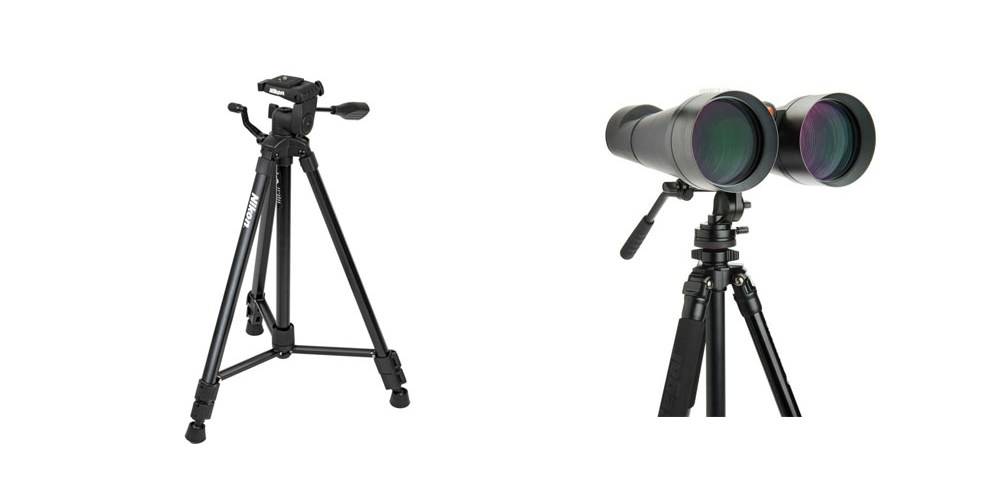
These types of binoculars are usually top dollar options that use a battery for the active image stabilization mechanism. If you really need image steadiness with your binocular these can present a good alternative, however, using your tripod will work fine too.
Comfort and body durability
For a binocular, comfort begins with the grip. If you are planning to move around with your binoculars, you will need one that features decent rubber armor which will also provide a reliable non-slip grip.
While the rubber armor works well to establish a strong grip, it also gives the binoculars a rugged feel that is shockproof. This adds an extra layer of protection to your lenses.
You will also want to get binocular with water and fog resistance. This will prevent fog or dew drops from getting into the binoculars to distort your viewing.
If you are going for durability, you will also have to think about the material used to make the chassis of the binocular. Here are some of the most popular options that most manufacturers use.
Aluminum
It’s preferred for its corrosion resistant capacity. It’s also a lightweight material that is easy to work with yet strong and durable.
Polycarbonate
This material is also easy to work with and its main advantage is that it is temperature resistant to the protection of the optics inside the lenses. Its temperature resistant properties make it a good fit for binoculars built for extreme weather conditions.
Magnesium
This is another metal alloy that most manufacturers use due to the high strength to weight ratio it provides. It is a good pick for those who are looking for lightweight long distance binoculars.
Magnification and objective lens diameter
Binoculars are categorized by their magnification and objective lens diameter. That is why you will a set of numbers like this 20×60, 10×50 with every model. The first number in the equation represents the magnification of the binoculars and the second number stands for the objective lens diameter.
Most long-distance binoculars have a high magnification number to enable them to magnify objects from a long distance. The objective lens diameter, on the other hand, determines how much light can be gathered to make your distant image look bright and clear.
As a result, the bigger the magnification and objective lens diameter the better the image quality from your long distance binoculars.
Variable magnification
Variable magnification is only possible with zoom binoculars. These usually have a number such as 20-30×60.
Zoom binoculars offer great versatility however, they tend to present images with low sharpness and contrast. Generally, the image tends to suffer as you move through the magnification range.
Exit pupil
The size of the focused light hitting your pupil when you look into the binoculars is the exit pupil. The size of the exit pupil is supposed to be bigger than the diameter of your pupil.
This way, more light from the image hits your eyes and your view is sharper and clearer. On the other hand, with a small exit pupil what you end up with is a view similar to peeping through a hole.
You can easily determine the exit pupil by dividing the magnification to the objective lens diameter.
Eye relief
Eye relief – this is the distance between your eye and the eyepiece. If you plan to use the binocular with your glasses on this feature should be among the top in your list.
This is because it will determine the comfort of your viewing. Most options offer an eye cup that positions your eyes at the optimal viewing distance. You can also go with options that have a dioptric adjustment knob that lets you fine-tune the focus according to your eye prescriptions.
Prism system
Binoculars need prisms to orient the image for clear viewing. There are only two prism designs out there. They include:
- Porro prism: prisms in this system are arranged at an angle with the eyepiece being offset from the lens tubes. This system produces bulkier binoculars.
- Roof prisms: in this system, the prisms are arranged in a streamlined position for a compact body. This is a common system in the more expensive binoculars.
Lens coating
From prisms to lens coating. Here, what you need to know is that when the light hits the glasses of the lenses and the prism, it tends to bounce back though reflections. As a result, some of the light is lost and the image becomes blurred and out of focus.
With a layer of anti-reflective coating, your binocular will be able to achieve high levels of light transmission for a clear image. There are three level of coating and they range from coating, multi-coating and the fully multi-coating design.
The coating levels represent the number of surfaces in the binocular with the coating layer. The top level is the fully multicoated design that is capable of over 90 percent light transmission.
Type of Glass
The type of glass used to make the lens and the prisms of your binocular need to have a high refractive index for you to achieve high levels of light transmission for image clarity.
BaK4 is one of the best options you can have as it boasts of a high refractive index and it is considered one of the top materials for prisms. Other options include BK7 and SK15.
Conclusion
Those are the main features to keep in mind while looking for the best binoculars for long distance. We have categorized our list of the top 5 according to budget, durability and the different needs you might have so as to be sure to check all boxes.
Remember that a long distance binocular is capable of various uses. With the right features, you can easily get binocular that could replace your telescope.
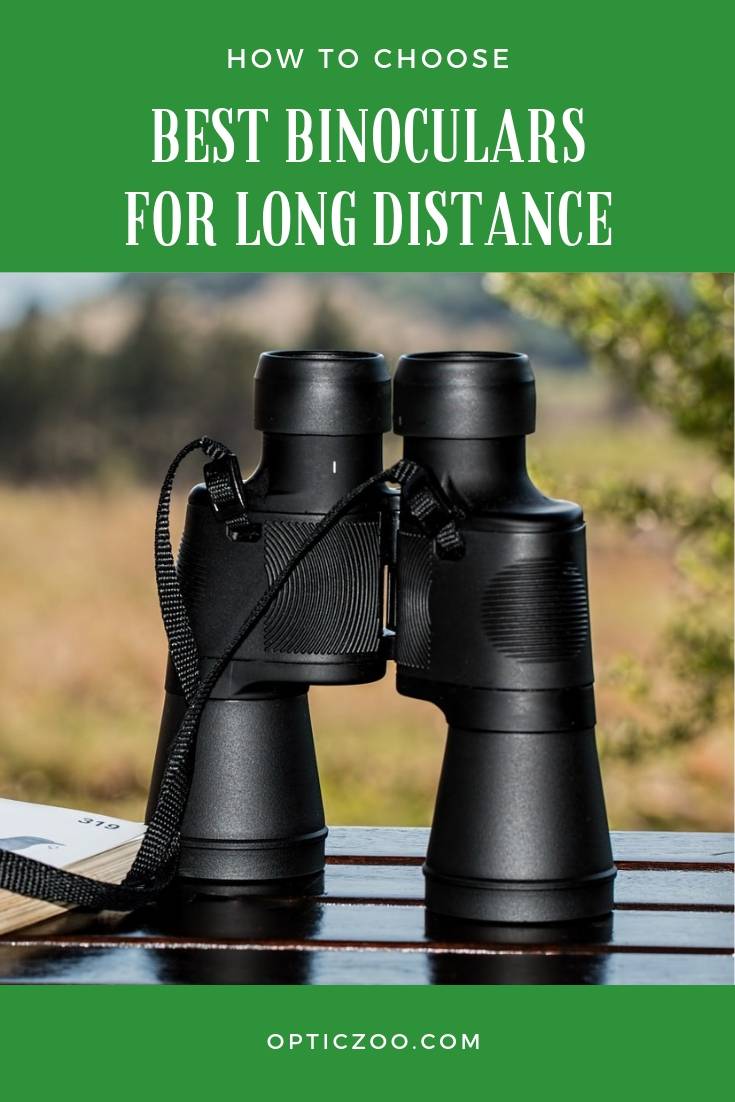


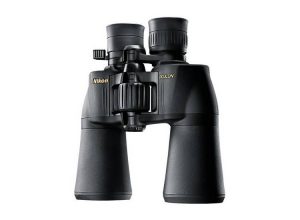
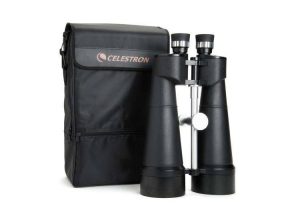
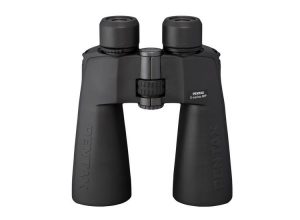
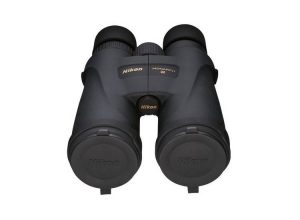
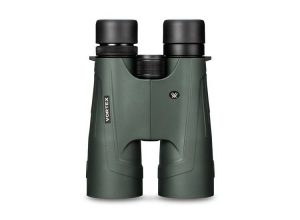
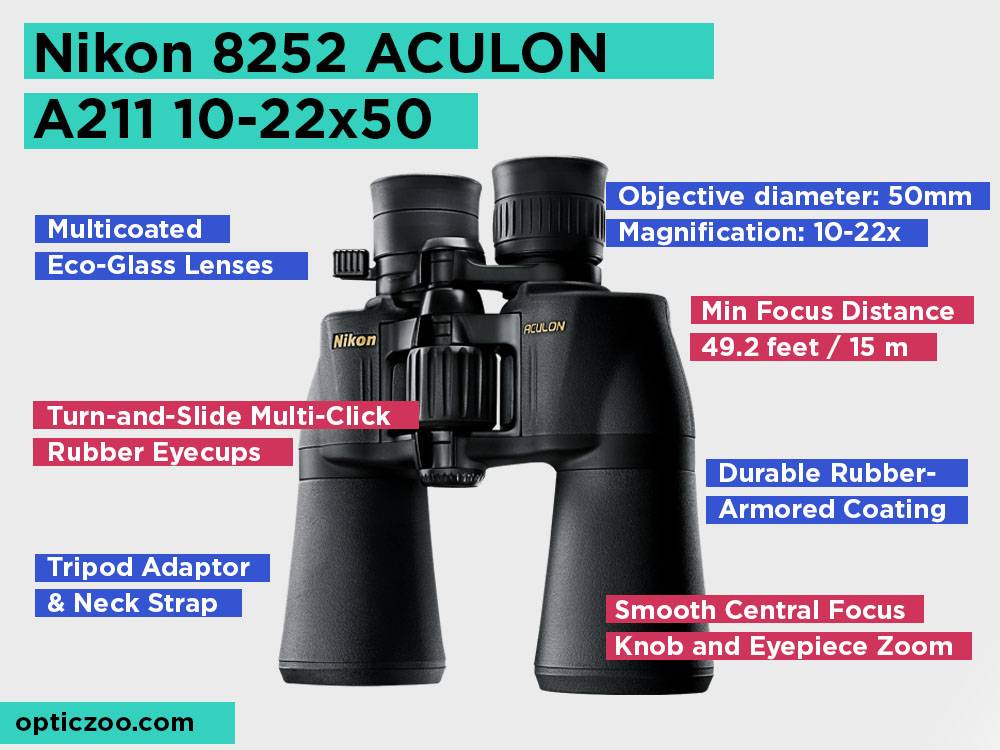

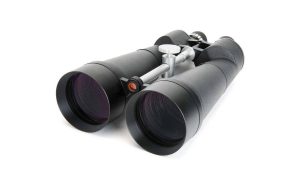
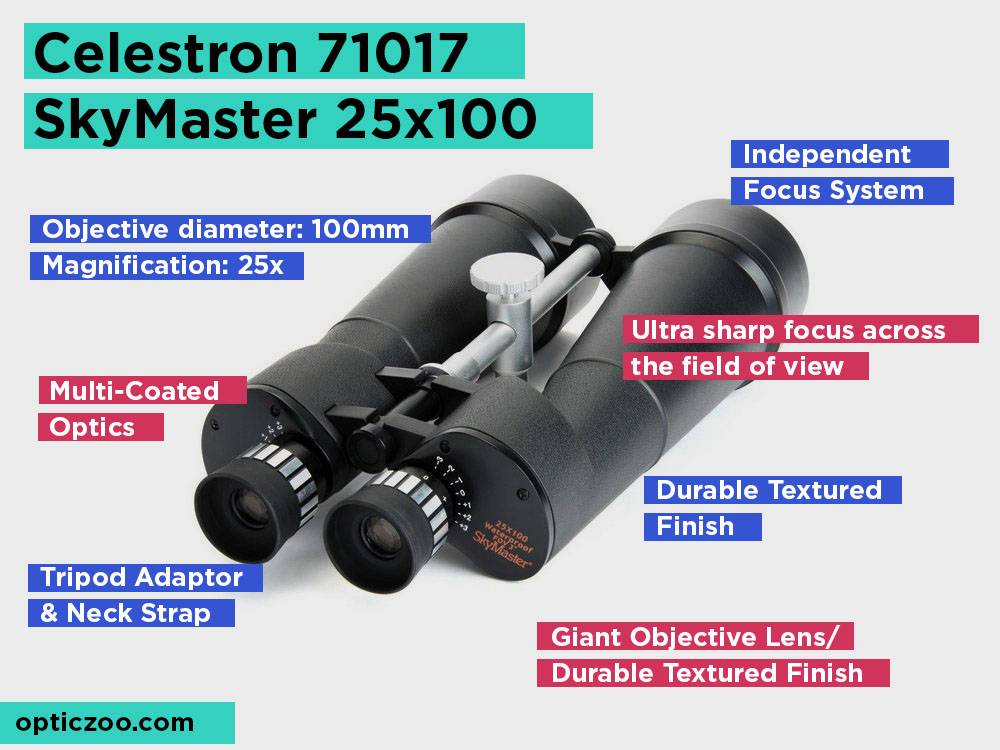
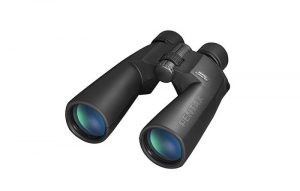
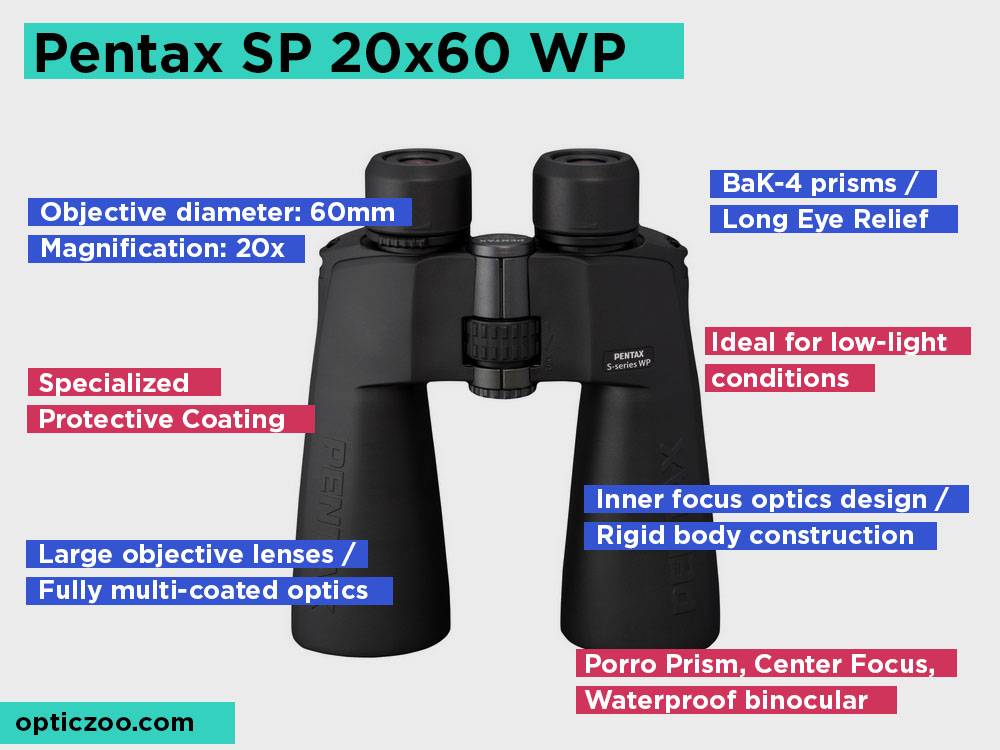
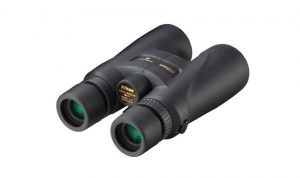
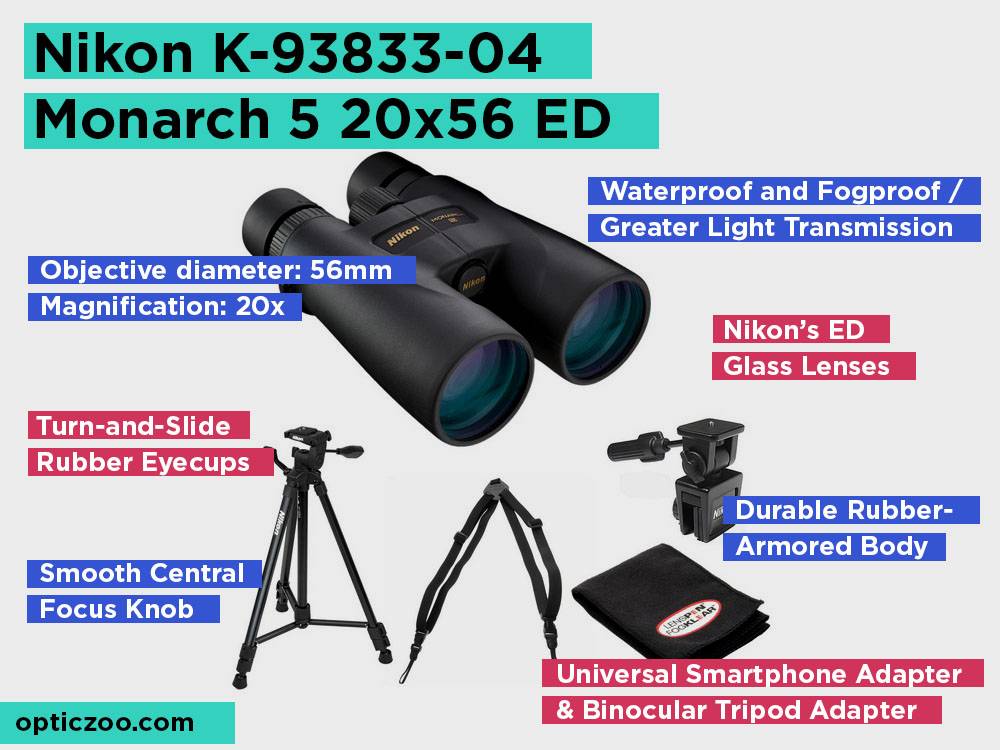
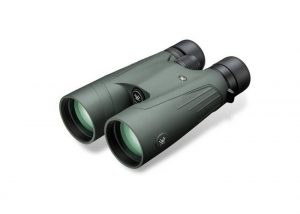
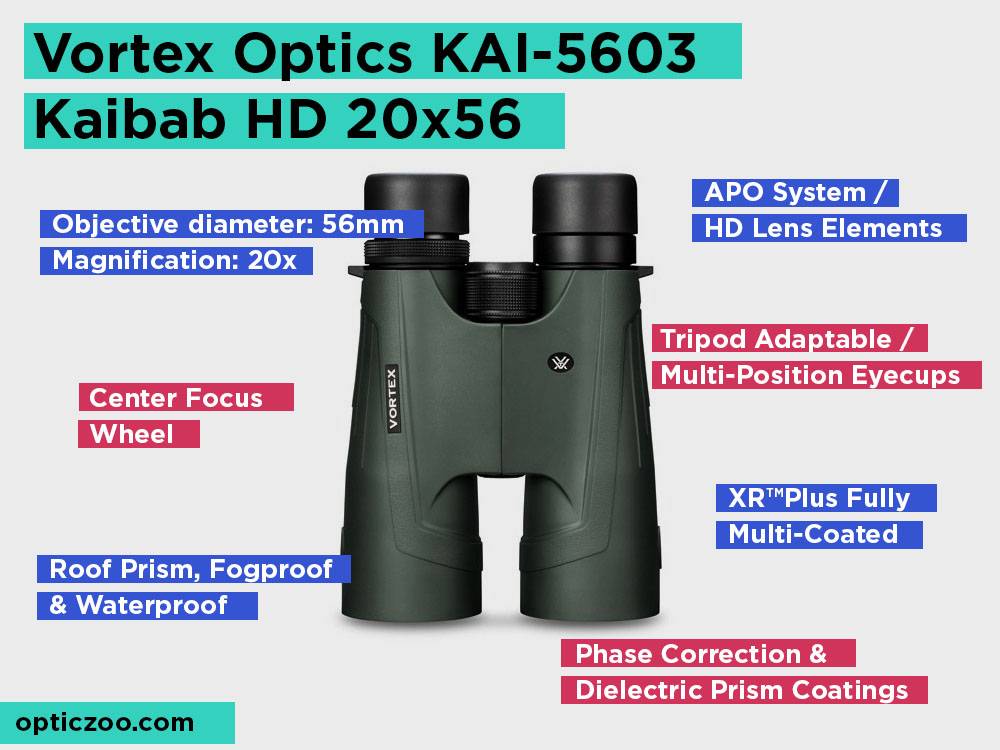
First of all thanks for such a great article about Binoculars. It is very helpful for a beginner like me. After reading this post, I am going to pick Nikon 8252. What do you say about that?
I think it’s really nice choice.
Merci pour ce guide qui me conforte dans mon choix ,pour l’observation animalière en montagne ,j’ai choisi les pentax.
I am looking binoculars to look airplanes going to a near airport. I am 90 years old and will be an entertainer.
What an wonderful review and awesome looking site it is (y)
My wife gave me outbound 9-27×50 what do you think about those?
This is really are great binoculars for hunting for long distances. Your all binoculars are good and nice keep your work up.
This is really a very nice post, all the aspects are well elaborate in your article. I read it all the binoculars also have a good quality. i like all these.